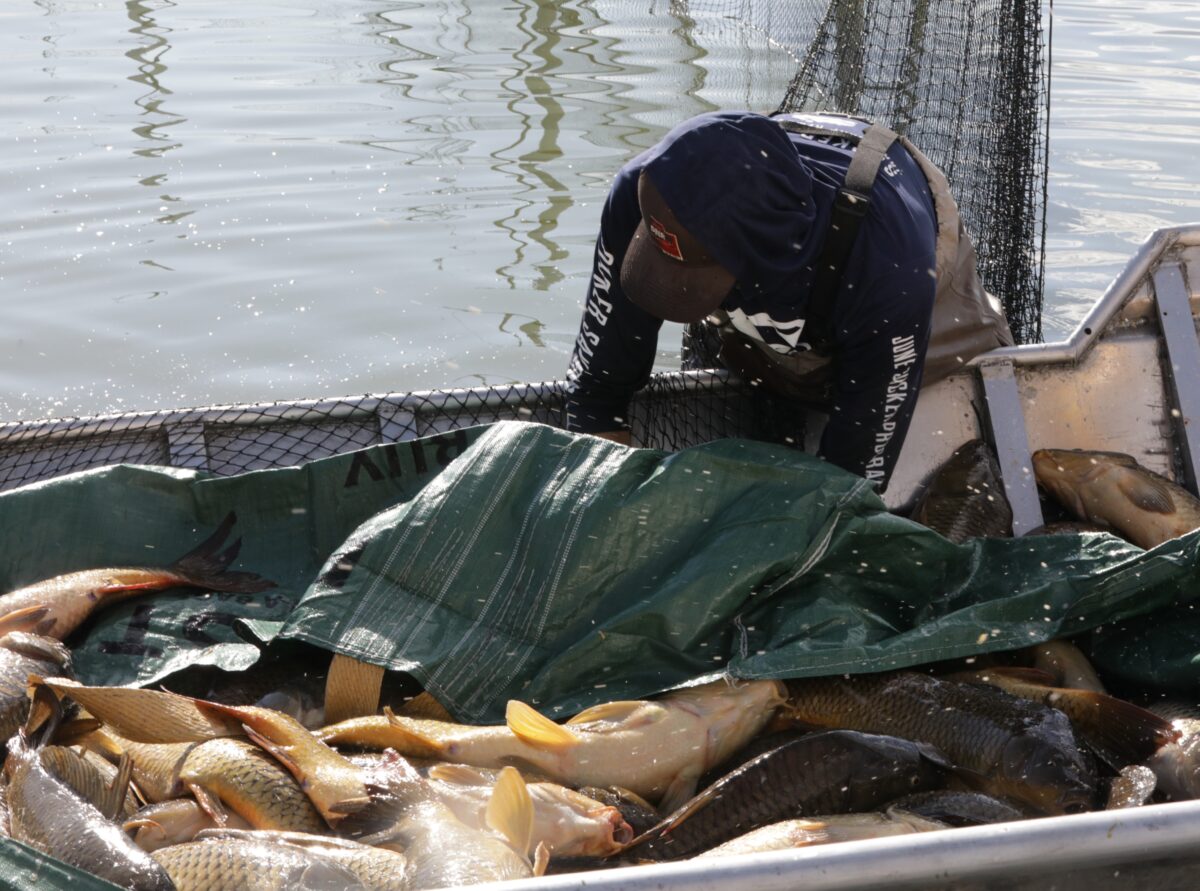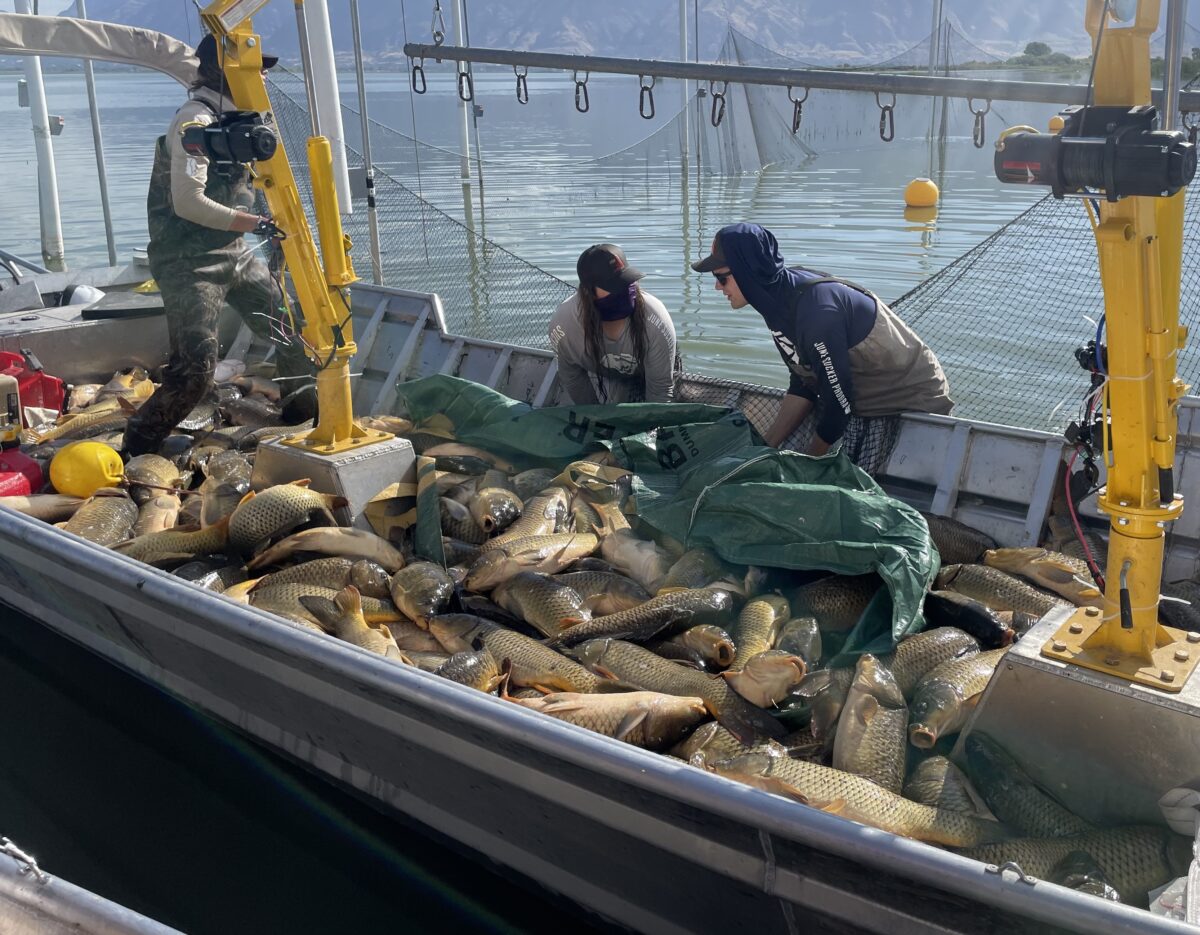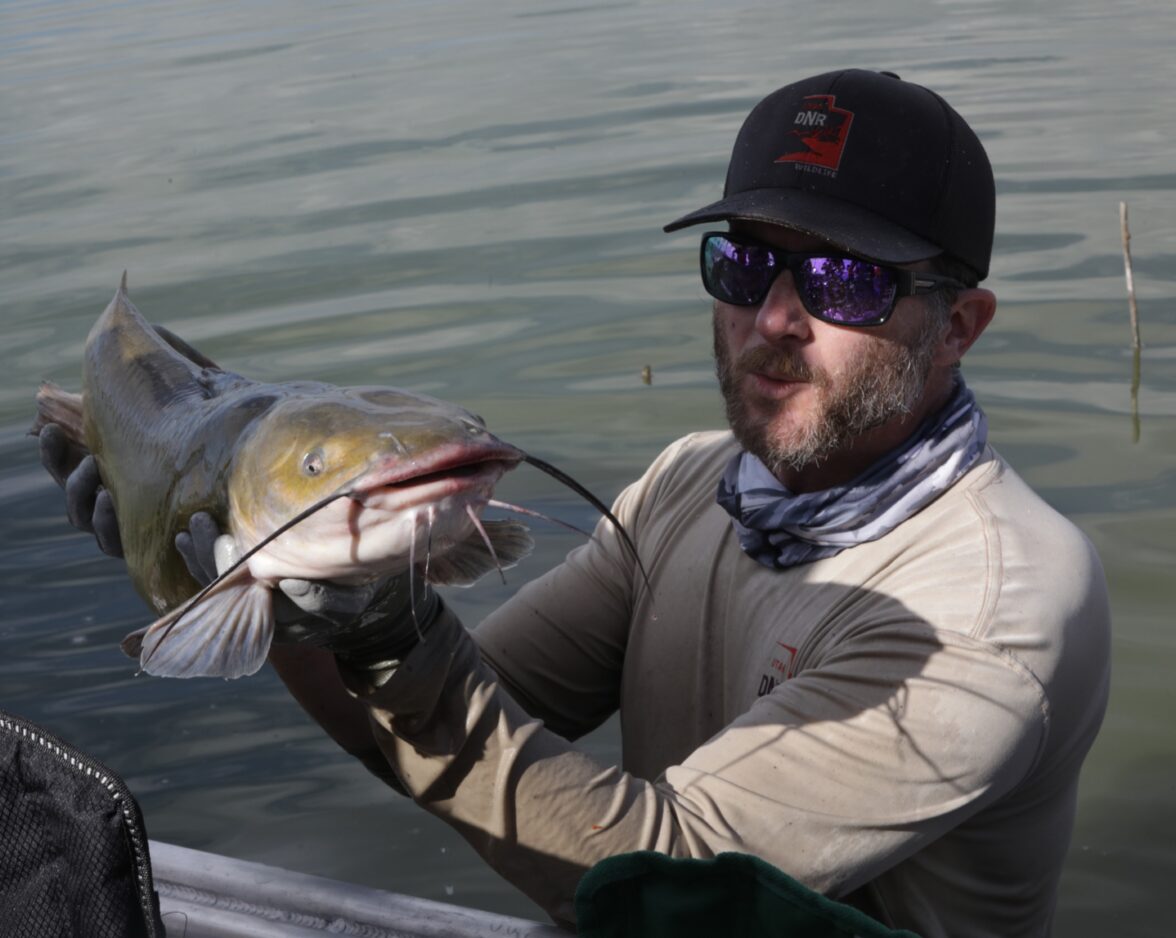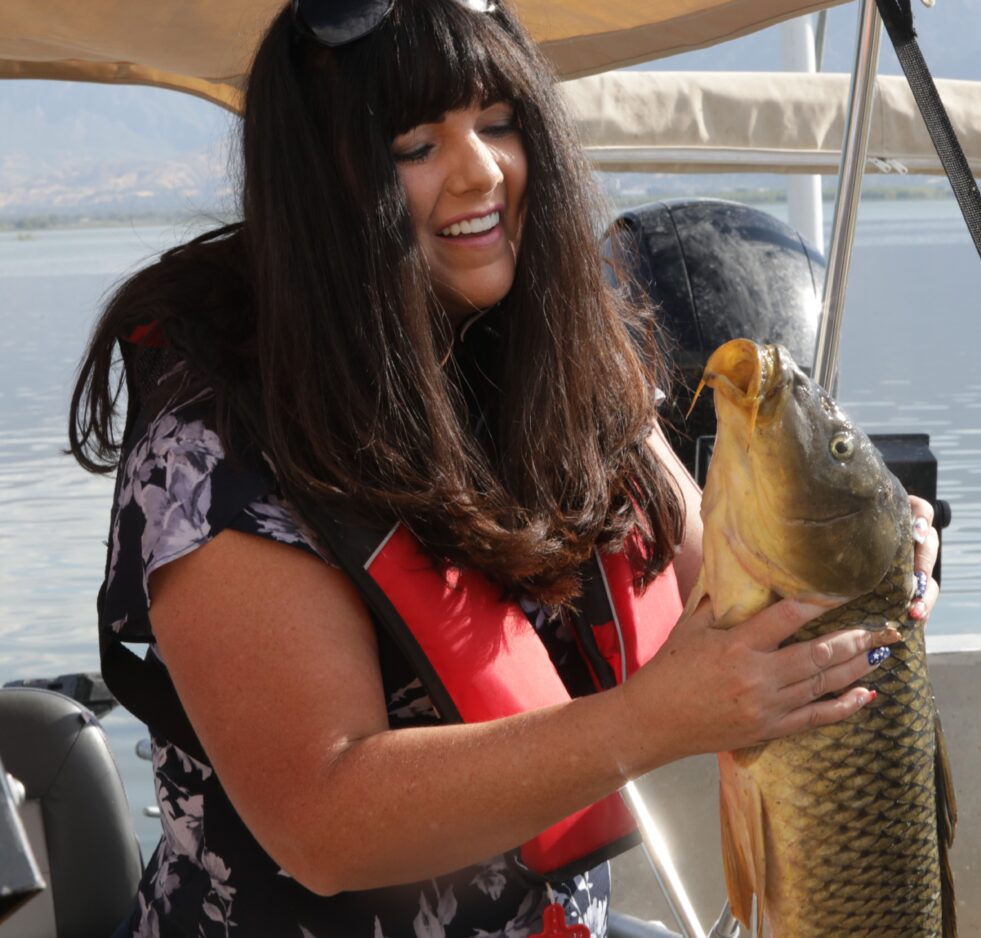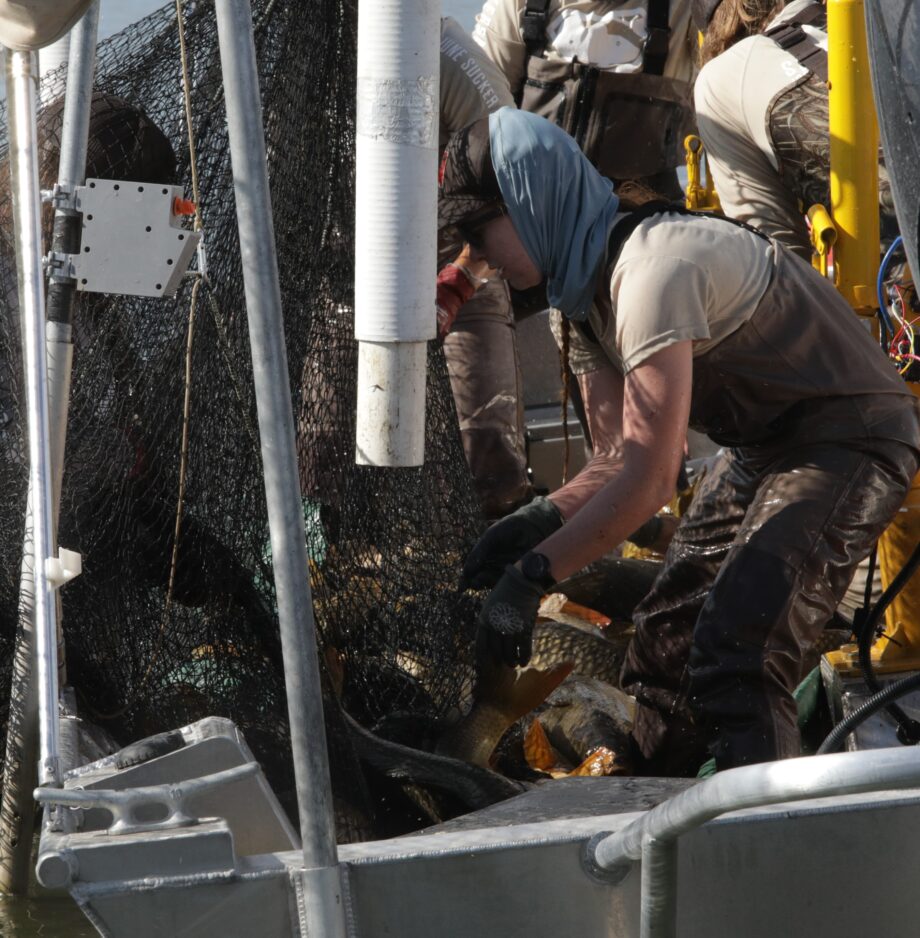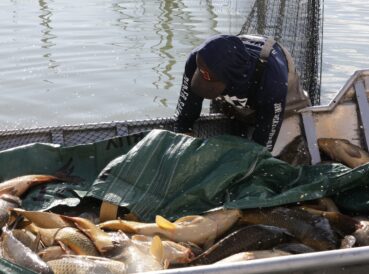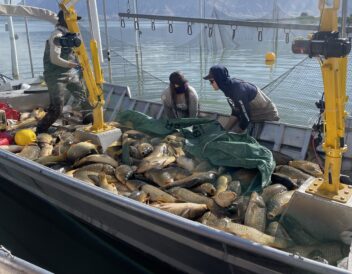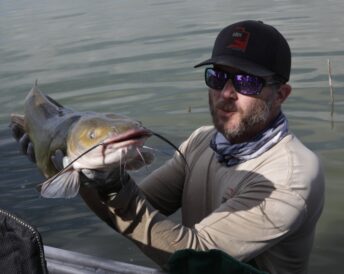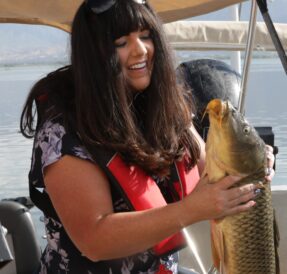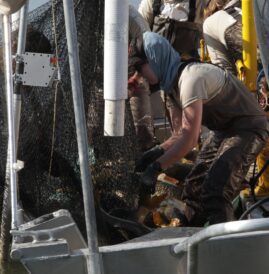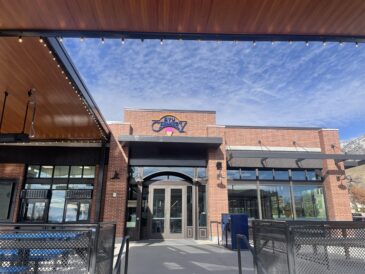Catching carp: Using automated box traps to combat the invasive species at Utah Lake
- Division of Wildlife Resources employees load carp onto a boat Tuesday, July 22, 2025, in Provo Bay at Utah Lake.
- Division of Wildlife Resources employees load carp onto a boat Tuesday, July 22, 2025, in Provo Bay at Utah Lake.
- Division of Wildlife Resources Native Aquatics Project Leader Chris Crockett handles a catfish at Utah Lake on Tuesday, July 22, 2025.
- State Sen. Heidi Balderree holds a carp while on a boat at Utah Lake on Tuesday, July 22, 2025.
- Division of Wildlife Resources employees load carp onto a boat Tuesday, July 22, 2025, in Provo Bay at Utah Lake.
The June Sucker Recovery Implementation Program has gone to great lengths to reduce the population of invasive carp in Utah Lake and restore the once endangered June sucker fish to its native habitat.
Operating as a conglomerate of nine local, state and federal agencies, the program enlisted commercial netting companies in 2009 to fish out the carp, and the effort proved successful, as over 32 million pounds of carp were removed from the lake and the June sucker was upgraded from “endangered” to “threatened” status in 2021.
Recently, the agencies began looking for more novel techniques to remove carp and launched a new pilot program last year called “carp traps.”
Russ Franklin, a biologist for the Central Utah Water Conservancy District and assistant director of the June Sucker Recovery Implementation Program, said there are 11 automated box traps set up throughout the lake, designed to lure carp in and catch them in large nets.
Still in its infancy and operating at a small scale, there is no set data to show the method’s efficacy on a holistic level. However, a single box trap can catch thousands of pounds of carp at a time and can be effective during the summertime, opposed to commercial netting, which operates better in the fall and winter.
“It’s just one more tool in the toolbox to see what we can do to help reduce the carp population,” Franklin said.
On Tuesday morning, state leaders Lt. Gov. Deidre Henderson and Sen. Heidi Balderree set out on a boat with Central Utah Water Conservancy District officials to get a firsthand glance at how the new traps work, and the Daily Herald tagged along.
“I always think that we make the best decisions when we get closer to the issue,” said Balderree, who represents much of Eagle Mountain, Saratoga Springs and Lehi. “I love where we live, and the lake is our heritage; it’s our legacy. To see the work firsthand was magical.”
Importance of carp removal
The carp-removal process is critical in restoring the June sucker and improving the overall health of the lake.
While the Division of Wildlife Resources has been growing June suckers for decades out of a hatchery in Logan, Franklin said natural recruitment of the species has struggled because June sucker larvae are eaten by predators.
Carp impact the process by eating all the vegetation at the lake’s bottom, preventing vegetation from re-establishing and giving June sucker larvae nowhere to hide and grow.
“If you think of it like a jungle,” Franklin said, “they don’t have the trees and the bushes to hide around from the predators. … As we remove carp, it helps the vegetation, gives it a chance to get reestablished. Doing that gives baby June suckers a chance to actually grow.”
The increase in vegetation can also lead to a reduction of blue-green algae and improve the water quality.
While commercial netting has been the main way to remove carp, it has its limitations. Franklin said it is often ineffective during the summertime and struggles in high-water years because nets get caught in vegetation when boats enter shallow areas.
Carp traps, on the other hand, are effective in the summertime and operate well regardless of the lake’s water levels. Franklin said overhead costs are also lower, and seasonal employees can be hired, opposed to the full-time commercial fisherman.
“Can we do both of them?” Franklin said. “Can we fish for carp and be effective with it, almost year round? And so that’s what we’re driving at.”
How the process works
The carp trapping is funded by the June sucker program and carried out by the Division of Wildlife Resources.
Automated box traps were leased from a company called Carp Solutions, and five were set in Provo Bay, two in Skipper Bay, one in Goshen Bay and two in the Provo River Delta, according to Franklin.
He explained that nets are set in shallow water and surrounded by pulleys that are weighted down. Cracked corn and kernel corn, which June suckers don’t eat, are placed onto the nets to bait the carp in. After a few days, a timer goes off and the pulleys are lifted, trapping the carp in the net.
“They call them triggers and timers. And what happens is, when the timer goes off, usually at night, it releases the pulleys that have the weights on them, and then the nets go up all around it, and so the carp become trapped in it, in a box,” Franklin said.
In the morning, DWR workers move a fish into a “purse” of the net, and a crane and manpower are used to lift the carp into the boat.
On Tuesday morning, several workers wore face coverings to shield themselves from the sun. They average around 7 pounds and resist capture, creating a loud scene of splashing water and requiring strenuous effort from the workers.
As the fish flop into a steel boat, they are intentionally spread across the floor of the deck to ensure the boat doesn’t sink to one side and fill with water.
On this particular catch, a handful of catfish were part of the haul and were taken out of the boat, moved to a separate boat to be weighed and then released back into the lake. The carp, meanwhile, continued to flop on the deck of the boat, capable of living for several minutes before losing oxygen.
Carp removed from the lake are used for waste compost, Franklin said, oftentimes shipped on railroad cars and taken to solid waste sites in Fairfield or Price.
“Today was the first time I was actually able to witness what they’re doing with the trap and getting them onto the boat, weighing them and sorting the fish,” Balderree said. “And it was exciting to see it up close and to learn about all the different partners working together to help improve the health of the lake.”

